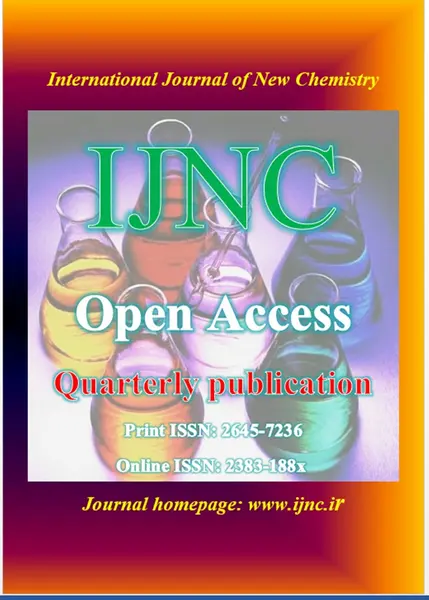-
role of nanotechnology and nanomaterials for water treatment and environmental remediation
جزئیات بیشتر مقاله- تاریخ ارائه: 1400/11/13
- تاریخ انتشار در تی پی بین: 1400/11/13
- تعداد بازدید: 158
- تعداد پرسش و پاسخ ها: 0
- شماره تماس ژورنال: 09122976055
role of nanotechnology and nanomaterials for water treatment and environmental remediation
nanotechnology has an impact on many scientific and technical fields, including environmental safety. environmental applications of nanotechnology include water and wastewater treatment, in which different nanomaterials utilize adsorption and separation processes, as well as a variety of other approaches, to remove pollutants, pathogens, and other hazardous elements. diverse forms, various composites, and active component functionalization are only a few of the ways nanomaterials are formed.
to ensure a plentiful supply of water, nanostructures have presented a practical alternative. due to its very specific area of surface, microinterface properties, and remediation potential, nanomaterials have emerged as a hot topic in environmental research. the review paper covers diverse treatment methods for wastewater, including adsorption, catalysis, spacing, and disinfection, and a range of nanomaterials such as nps for graphene, tio2 nanoparticles (nps), (nzvi), nps for nanoscale fe3o4, zno nps, nanoparticles in silver (ag-nps), carbon nanotubes (cnts), and several additional nps as well as various nanocomposite materials, such as inorganic and organic supports, magnetic nanocomposite, and nanocomposite membranes, etc. most crucially, the possible application of nanomaterials in water and wastewater treatment is also considered in the future.
حوزه های تحت پوشش ژورنال
مقالات جدیدترین رویدادها
-
استفاده از تحلیل اهمیت-عملکرد در ارائه الگوی مدیریت خلاقیت سازمانی و ارائه راهکار جهت بهبود
-
بررسی تاثیر ارزش وجوه نقد مازاد بر ساختار سرمایه شرکت های پذیرفته شده در بورس اوراق بهادار تهران
-
بررسی تأثیر سطح افشای ریسک بر قرارداد بدهی شرکت های پذیرفته شده در بورس اوراق بهادار تهران
-
بررسی تأثیر رتبه بندی اعتباری مبتنی بر مدل امتیاز بازار نوظهور بر نقد شوندگی سهام با تأکید بر خصوصی سازی شرکت ها
-
تأثیر آمیخته بازاریابی پوشاک ایرانی بر تصویر ذهنی مشتری پوشاک ایرانی (هاکوپیان)
-
مشخصات جریان ترافیک و ماهیت شناخت آن
-
بررسی پراکندگی و تراکم و قدمت اشکفت ها و معدن ها و مقبره های دستکند به ثبت رسیده در سازمان میراث فرهنگی ایران با استفاده از سامانه اطلاعات جغرافیایی
-
ارائه ی راهکارهای لازم برای مدیریت استراتژیک جوامع چند قومیتی بر اساس سیستم های چندمتغیره و دکوپله سازی آن ها
-
تاثیر بتن خود متراکم حاوی نانو سیلیس و متاکائولن در مقاومت فشاری محیط معمولی
-
کاربرد خوشه بندی فازی در تحلیل پروتئین های مرتبط با سرطان های مری، معده و کلون بر اساس تشابهات تفسیر هستی شناسی ژنی
مقالات جدیدترین ژورنال ها
-
مدیریت و بررسی افسردگی دانش آموزان دختر مقطع متوسطه دوم در دروان کرونا در شهرستان دزفول
-
مدیریت و بررسی خرد سیاسی در اندیشه ی فردوسی در ادب ایران
-
واکاوی و مدیریت توصیفی قلمدان(جاکلیدی)ضریح در موزه آستان قدس رضوی
-
بررسی تاثیر خلاقیت، دانش و انگیزه کارکنان بر پیشنهادات نوآورانه کارکنان ( مورد مطالعه: هتل های 3 و 4 ستاره استان کرمان)
-
بررسی تاثیر کیفیت سیستم های اطلاعاتی بر تصمیم گیری موفق در شرکتهای تولیدی استان اصفهان (مورد مطالعه: مدیران شرکتهای تولیدی استان اصفهان)
-
بررسی تاثیر آمیخته های بازاریابی سبز بر وفاداری مشتری در شرکتهای کوچک و متوسط محصولات غذایی سبز
-
امکان مطالبه و جبران غرامت و آسیب های جانی مالی نفتکش سانچی بر مبنای حقوق بین الملل
-
بررسی نقش فاکتورهای انگیزشی بر توانمندی کارکنان
-
معیارهای دموکراتیک در دنیای مدرن و اسلام در انتخابات منصفانه
-
comprehensive review on gas migration and preventative strategies through well cementing


سوال خود را در مورد این مقاله مطرح نمایید :